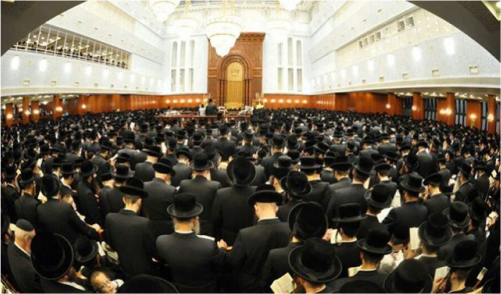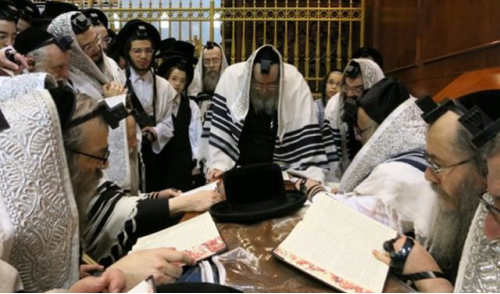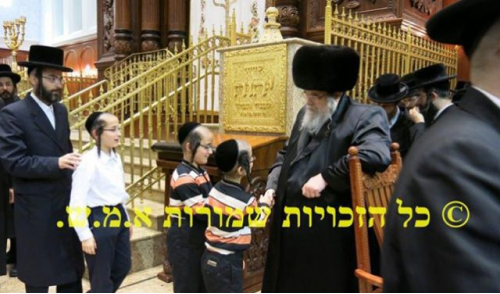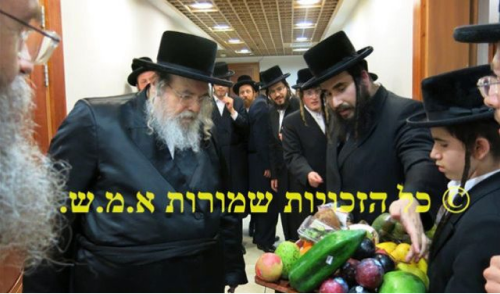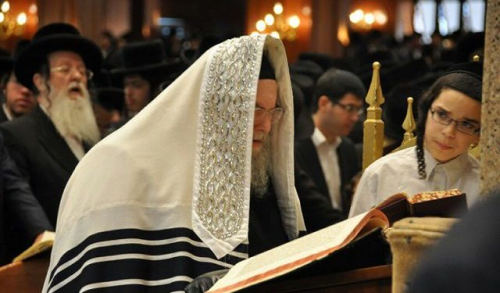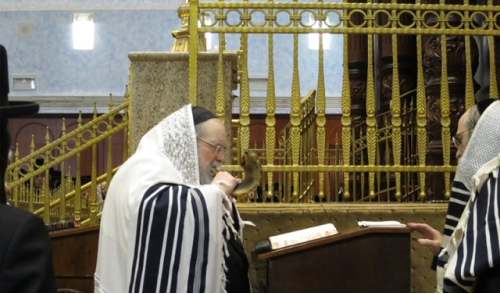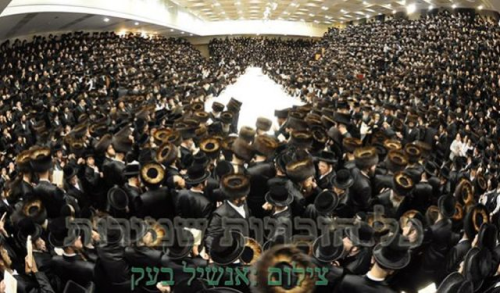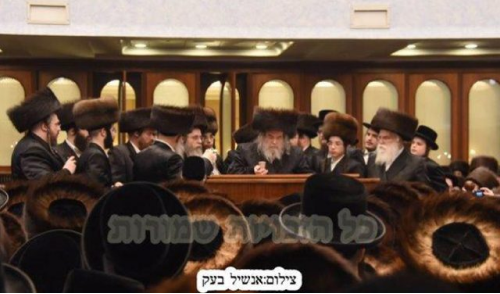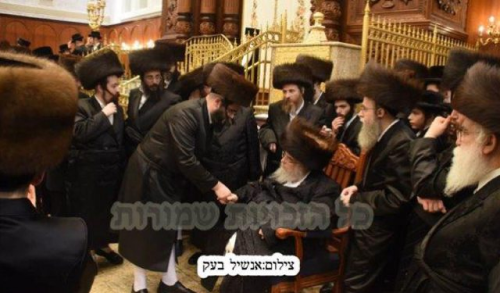
ראש השנה
Rosh Hashanah
The Jewish New Year
א’-ב’ תשרי / October 3-4, 2024

WHAT IS ROSH HASHANAH?
According to the Jewish tradition, creation began on the twenty-fifth of Elul, five days before Rosh Hashana. The sixth day of creation, the day that man came into existence, was the first day of Tishrei (Rosh Hashana). In the Mussaf liturgy of Rosh Hashana, we read: This day is the anniversary of the start of Your work, a remembrance of the first day. While creation started five days earlier, the first day of humankind was Rosh Hashana. The purpose of creation is man, so the work of Hashem is considered to have begun on this day. Thus, we begin each year anew on man’s birthday.
While this birthday is a joyful holiday, it is also a serious day, because of its designation as a day of judgment. The Mishna in Meseches Rosh Hashana states: Four times [of the year] the world is judged…on Rosh Hashana all who walk the earth pass before Him like young sheep… Like young sheep who pass through a small opening in the fence to be counted by their shepherd one by one, so does all humankind pass before their Creator to be judged individually on this day.

ARE YOU PREPARED FOR ROSH HASHANAH – a Day of Judgement?
Give Tzedakah as a merit for a Good Year
מלכיות – זכרונות – שופרות
ROSH HASHANAH PRAYERS ARE
CENTERED ON ‘THREE THEMES’:
מלכיות – Malchuyos – Kingship
There can be no king without subjects. While Hashem doesn’t lack anything, He became known as “King” after man was created, since now those were subjects to rule over. The first and most elementary theme of Rosh Hashana is to recognize this relationship – that Hashem is our G-d and that we are His servants.
What is meant by “King”? Does Hashem require pomp and ceremony like the vain ambitions of earthly kings? Certainly not. Instead, Hashem knows we stand to gain by serving Him and carrying out His mission. It wasn’t for His benefit that G-d created this world – it was for ours. By being faithful servants of Hashem, we “make” Him into our King and benefit ourselves to the highest degree possible.
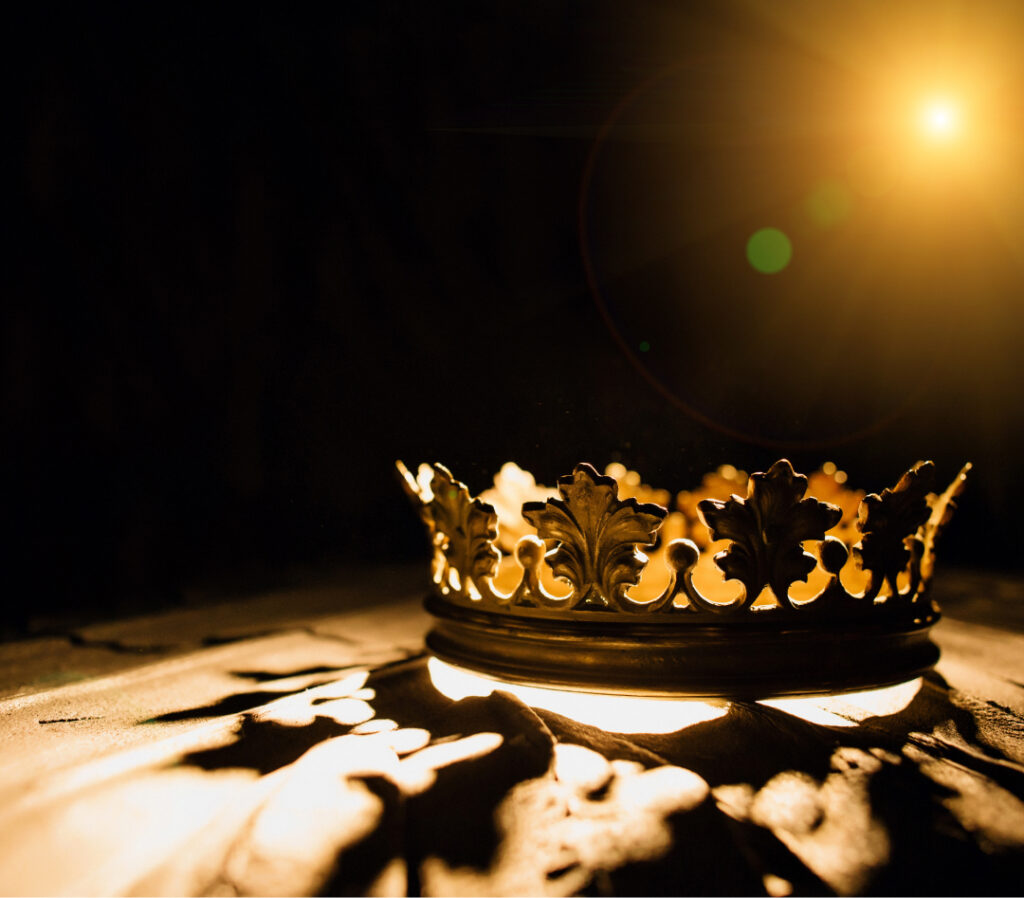

זכרונות- Zichronos – Remembrances
A fair judgment requires a precise recollection of past events, a clear understanding of the present, and a keen insight into all future possibilities. And while a judge needs to know all these factors to reach a clear verdict, Hashem’s determination is entirely different. Hashem is not bound by the rules of nature and time. Thus, while man must exert his mind to understand past events and to predict future ones, Hashem has no such need. With one glance, Hashem has a complete and accurate understanding of all events.
More so, Hashem understands man’s potential, limitations, ambitions, desires, and every other factor that influences man. Unlike a human judge who can never dream of issuing a flawless verdict due to human limitations, Hashem has no such impediment. When we say Hashem “remembers” on judgment day, every possible calculation is considered and weighed in that “one glance” of Hashem.
שופרות- Shofros – Shofar blasts
What about the primitive instrument of a ram’s horn – the shofar, that carries so much weight on judgment day? Why not use a flute, a clarinet, or some other instrument capable of stirring melody?
The ancients seforim that the piercing sound of the shofar represents the inarticulate cry that comes forth from the deepest recesses of man’s soul. Not only are we unworthy to stand on our merit, but we aren’t even capable of articulating our needs. Rather, we allow our undeciphered cry to ascend heavenward like the sound of the shofar blast. There, we pray it to be understood as our deepest desire to perform Hashem’s will and thus be accepted, sympathized with, and consoled.
Rambam offers a well-known reason for the biblical command to hear the shofar. He states that it contains a symbolism that we ought to consider. The Shofar blasts urge us to awaken from our year-long slumber and to repent. It motivates us to view our souls and improve our ways.
Numerous reasons are given for the mitzvah of Shofar. Rabbi Saadia Gaon enumerates ten. These are some:
1.
Trumpets are customarily blown when coronating a king. We, too, proclaim Hashem as our king on the anniversary of creation.
2.
To remind us of the giving of the Torah on Mount Sinai when a very great Shofar blast was heard.
3.
To remind us of Akeidas Yitzchak, where a ram was offered to Hashem instead of Abraham’s son.
4.
As a form of yearning for Moshiach and the ingathering of the exiles when a great shofar will blow and those who went lost will bow at Hashem’s holy mountain.
5.
To allude to techiyas hameisim – the resurrection of the dead – which the sounding of the Shofar will accompany.
Every Jew must hear the Shofar on Rosh Hashana.
There are three types of blasts:

תקיעה –Tekia, a long, strong sound

שברים – Shevarim, a broken sound

תרועה – Terua, a sobbing sound
It is interesting to note that every “broken” (Shevarim) and “sobbing” (Terua) sound is preceded by and followed by a Tekia (strong) sound. This teaches that while Teshuva takes us from a state of strength to a state of being broken and in tears, we do not become depressed or develop negative self-esteem. Instead, we end on a Tekia – a strong note – because Teshuva allows us to go forward confidently. We move forward from the point of strength, not weakness.
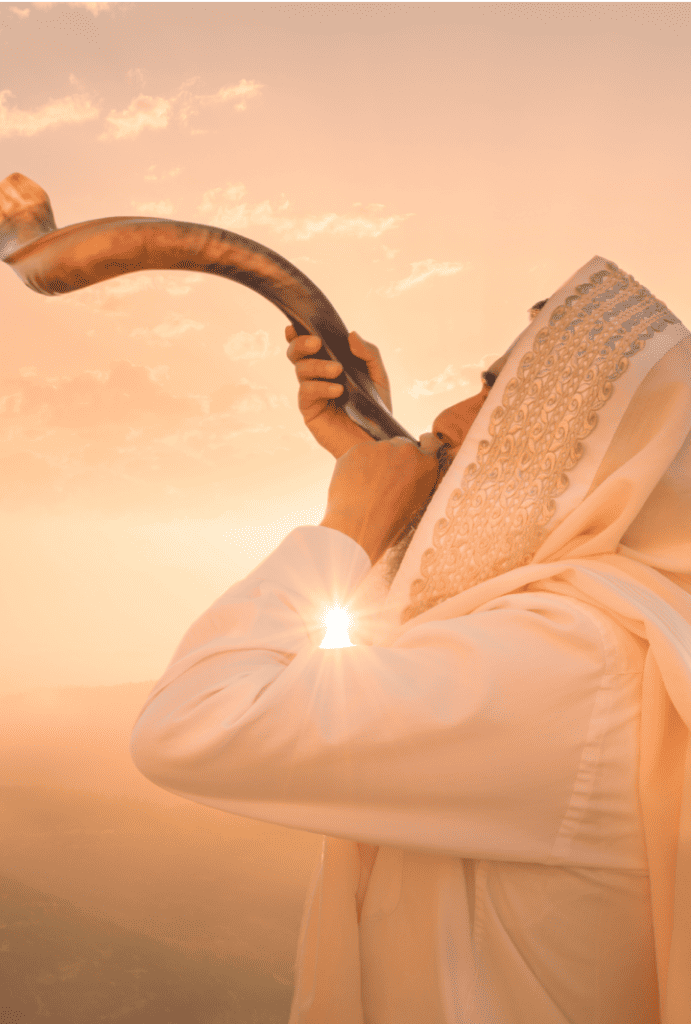

THE POWER TO BLESS
The Talmud teaches that man’s words have a tremendous impact, whether we know it or not. One who blesses another Jew engages in the act of kindness. This is especially true if the blessing stems from a feeling of love for one’s fellow Jew, in which case he will have fulfilled the biblical command of ואהבת לרעך כמוך.
While this is true all year round, it is especially relevant on Rosh Hashana when each person’s judgment hangs in balance. Thus, halachic sources present various versions of Rosh Hashana greetings that are customarily used when greeting one another on Rosh Hashana eve.
The most common version is לשנה טובה תכתב ותחתם לאלתר לחיים טובים ולשלום – (May you be inscribed and sealed for a good year immediately, for a good life and for peace). Another standard greeting is “כתיבה וחתימה טובה” (Be written and sealed for good). After Rosh Hashana, this greeting is changed to “גמר חתימה טובה (A final sealing for good), as the verdict was written already on Rosh Hashana. The sealing will take place on Yom Kippur.
Since Hebrew grammar requires different word usages depending on who is being addressed (one vs. many) and which gender, we find four other possibilities.
“A happy new year, written and sealed for a good, peaceful life.”

To One Man
לשנה טובה תכתב ותחתם לאלתר לחיים טובים ולשלום
L’SHANA TOVA TIKASEV V’SECHASEM L’ALTER, L’CHAIM TOVIM, ULISHALOM

To Multiple Men
לשנה טובה תכתבו ותחתמו לאלתר לחיים טובים ולשלום
L’SHANA TOVA TIKASEVU V’SECHASEMU L’ALTER, L’CHAIM TOVIM, ULISHALOM

To One Woman
לשנה טובה תכתבי ותחתמי לאלתר לחיים טובים ולשלום
L’SHANA TOVA TIKASEVEE V’SECHASEMEE L’ALTER, L’CHAIM TOVIM, ULISHALOM

To Multiple Women
לשנה טובה תכתבנה ותחתמנה לאלתר לחיים טובים ולשלום
L’SHANA TOVA TIKASAVNA V’SECHASAMNA L’ALTER, L’CHAIM TOVIM, ULISHALOM
Give Tzedakah to merit a good year
The סימנים- Simanim
Symbolic Foods

The Talmud states: Abaye taught: …an omen has meaning; one should accustom himself at the beginning of the year to eat gourds, fenugreek, leeks, beets, and dates. Rashi explains that some foods are sweet, and others multiply. Thus, they symbolize a sweet year and a year full of abundance. The word “Simanim” means signs. This does not mean, however, that we engage in any kind of “good luck charm” for good fortune. Instead, these are signs of faith and trust in Hashem. We place our faith in Hashem that He grants us a sweet year of abundance.
Reciting a short prayer before eating these and other symbolic foods is customary. We pray for a sweet year, increased merit, elimination of our enemies, and more. We also hope that if G-d forbid, there is a bad decree, these prayers and demonstrations of faith will help overturn it for good. Halachic sources indicate that we are not limited to the foods mentioned in the Talmud. Other foods can be symbolic as well, such as if the name of the food is synonymous with a positive idea.
Some of the common Simanim and their prayers are:
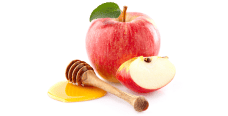
Apple/Challah and Honey
יהי רצון מלפניך ה’ אלקינו ואלקי אבותינו שתחדש עלינו שנה טובה ומתוקה.
May it be Your will, Hashem, our G-d and the G-d of our forefathers, that You renew a good and sweet year for us.

Carrots
יהי רצון מלפניך ה’ אלקינו ואלקי אבותינו שירבו זכיותינו
May it be Your will, Hashem, our G-d and the G-d of our forefathers, that our merits increase.

Leek or Cabbage
יהי רצון מלפניך ה’ אלקינו ואלקי אבותינו שיכרתו שונאינו
May it be Your will, Hashem, our G-d and the G-d of our forefathers, that our enemies be decimated.
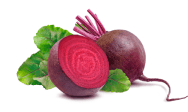
Beets
יהי רצון מלפניך ה’ אלקינו ואלקי אבותינו שיסתלקו אויבינו
May it be Your will, Hashem, our G-d and the G-d of our forefathers, that our adversaries be removed.

Dates
יהי רצון מלפניך ה’ אלקינו ואלקי אבותינו שיתמו שונאינו
May it be Your will, Hashem, our G-d and the G-d of our forefathers that our enemies be consumed.
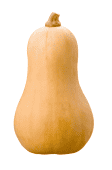
Gourd
יהי רצון מלפניך ה’ אלקינו ואלקי אבותינו שיקרע גזר דיננו ויקראו לפניך זכיותינו
May it be Your will, Hashem, our G-d and the G-d of our forefathers, that the decree of our sentence be torn asunder, and may our merits be proclaimed before You.
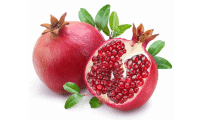
Pomegranate
יהי רצון מלפניך ה’ אלקינו ואלקי אבותינו שנרבה זכיות כרמון
May it be Your will, Hashem, our G-d and the G-d of our forefathers, that our merits increase as the seeds of a pomegranate.

Fish
יהי רצון מלפניך ה’ אלקינו ואלקי אבותינו שנפרה ונרבה כדגים
May it be Your will, Hashem, our G-d and the G-d of our forefathers, that we are fruitful and multiply.

Head of a Sheep or Fish
יהי רצון מלפניך ה’ אלקינו ואלקי אבותינו שנהיה לראש ולא לזנב
May it be Your will, Hashem, our G-d and the G-d of our forefathers, that we are at the head, not the tail.

Apple/Challah and Honey
יהי רצון מלפניך ה’ אלקינו ואלקי אבותינו שתחדש עלינו שנה טובה ומתוקה.
May it be Your will, Hashem, our G-d and the G-d of our forefathers, that You renew a good and sweet year for us.

Beets
יהי רצון מלפניך ה’ אלקינו ואלקי אבותינו שיסתלקו אויבינו
May it be Your will, Hashem, our G-d and the G-d of our forefathers, that our adversaries be removed.

Pomegranate
יהי רצון מלפניך ה’ אלקינו ואלקי אבותינו שנרבה זכיות כרמון
May it be Your will, Hashem, our G-d and the G-d of our forefathers, that our merits increase as the seeds of a pomegranate.

Carrots
יהי רצון מלפניך ה’ אלקינו ואלקי אבותינו שירבו זכיותינו
May it be Your will, Hashem, our G-d and the G-d of our forefathers, that our merits increase.

Dates
יהי רצון מלפניך ה’ אלקינו ואלקי אבותינו שיתמו שונאינו
May it be Your will, Hashem, our G-d and the G-d of our forefathers that our enemies be consumed.

Fish
יהי רצון מלפניך ה’ אלקינו ואלקי אבותינו שנפרה ונרבה כדגים
May it be Your will, Hashem, our G-d and the G-d of our forefathers, that we are fruitful and multiply.

Leek or Cabbage
יהי רצון מלפניך ה’ אלקינו ואלקי אבותינו שיכרתו שונאינו
May it be Your will, Hashem, our G-d and the G-d of our forefathers, that our enemies be decimated.

Gourd
יהי רצון מלפניך ה’ אלקינו ואלקי אבותינו שיקרע גזר דיננו ויקראו לפניך זכיותינו
May it be Your will, Hashem, our G-d and the G-d of our forefathers, that the decree of our sentence be torn asunder, and may our merits be proclaimed before You.

Head of a Sheep or Fish
יהי רצון מלפניך ה’ אלקינו ואלקי אבותינו שנהיה לראש ולא לזנב
May it be Your will, Hashem, our G-d and the G-d of our forefathers, that we are at the head, not the tail.
Rosh Hashanah Prayers
Much of the day of judgment is spent in prayer. We know that Rosh Hashana is when our destiny is determined, and we want to put our best foot forward. The first day of Tishrei is the first of the עשרת ימי תשובה – Ten Days of Repentance, which begins on Rosh Hashana and concludes on Yom Kippur. The ancients taught that prayer and repentance are especially effective during these ten days and much more readily accepted in heaven.
Yet, while prayer is one of the highlights of Rosh Hashana, the emphasis of our liturgy is not on ourselves. Most of it centers around the greatness and majesty of Hashem and our acceptance of His rule. If Rosh Hashana is part of the Ten Days of Repentance, why is repentance not stressed on this day?
The answer is obvious. Sincere repentance starts with a firm belief that Hashem is in control and that we are subjected to His will. Without the faith in Hashem, we can never hope to repent. However, once we accept the rulership of Hashem and yearn for all humankind to recognize this truth, we can begin working on ourselves and hope to receive repentance from on high.

שחרית- Shacharis
While similar in style to the prayers on Shabbos and Yom Tov throughout the year, Shacharis on Rosh Hashana has some significant differences. First, we include many piyutim, special liturgical poems not part of the original davening. Second, the annunciation used by the Chazzan is unique to the high holidays.
Hamelech…המלך…
The Chazzan begins Shacharis by chanting “Hamelech” in a haunting tune. After singing the first stanza, he goes to the Amud and continues.
Upon concluding the Yishtabach prayer, but before beginning Kaddish, the verse of 130 is read. Many congregations recite each verse aloud first by the Chazzan and then by the congregation.
Avinu Malekeinu…אבינו מלכנו…
Upon concluding Chazaras Hashatz, the Aron Hakodesh is opened, and Avinu Malekeinu – which is reserved for fast days and the Ten Days of Repentance – is recited. It includes multiple pleas to Hashem for a good year, forgiveness, good health, redemption, sustenance, and much more. A few stanzas are slightly altered during the Ten Days of Repentance. For example, we say on fast days during the year, “Remember us in the book for a good life. During the ten days of repentance, we pray for an inscription in the Book of Good Life.
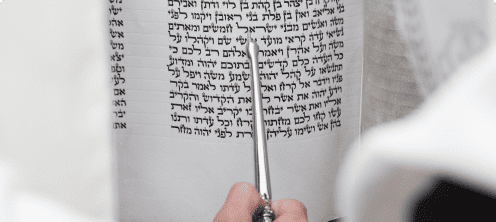
THE TORAH READINGS
The Torah readings on Rosh Hashana pertain to ideas integral to the day. Rosh Hashana is a holiday, so five people are called up to the Torah, which includes one Cohen and one Levi. If Rosh Hashana falls on Shabbos, seven people are called up. This does not include Maftir, which is the final portion read on Shabbos and Yom Tov and is not included in the count of five or seven.
The Torah reading on the first day recalls how Hashem remembered Sarah and how she had a child after waiting for many years. With time, Sarah worries that Yishmael’s bad behavior might influence her son. Avraham banishes him and his mother, Hagar, from their home. When out in the wilderness, their water supply runs dry, Yishmael becomes gravely ill, and Hagar abandons Yishmael because she can’t bear to see him die.
Hashem hears Yishmael’s cry, and an angel instructs Hagar not to fear but to lift the boy because “shama Elokim el Kol ha’na’ar ba’asher hoo sham” – Hashem heard the voice of the lad in his present state. Hashem allows Hagar to see a well, at which point she draws water and saves her son’s life. The concept of “ba’asher hoo sham” – the present state of the lad, ties into the theme of Rosh Hashana. Like Yishmael, who sinned before his suffering, we, too, make mistakes.
On Rosh Hashana day, we come before our Creator to request mercy. If we are now sincere, Hashem looks not at our past or future. Rather, He focuses on our present state. While Yishmael’s descendants would cause the Jewish nation to suffer greatly, Yishmael himself was judged solely on his own merit.
The reading on the second day is about the Akedah. Hashem tested Avraham to see if his love for Him would transcend all else. Despite the staggering pain of slaughtering an only child, Avraham persevered. Every bone in Avraham’s body rebelled, yet his love for Hashem transcended all else. At the last second, an angel intervened, preventing Avraham from slaughtering his son. At that time, the angel of Hashem swore a mighty oath that Avraham’s progeny would become very great and inherit the gate of its enemies. We learn from this story about the intense love we ought to have for Hashem and His everlasting love for the Jewish nation, the descendants of Avraham.

Blowing the shofar
Shofar blowing is the highlight of Rosh Hashana and the biblical command unique to the day. While the custom is to sound one hundred blasts, the first thirty are the main ones. These are sounded after the Torah reading before Mussaf. The exception is if the first day of Rosh Hashana falls on Shabbos, in which case the shofar is not sounded. In those years, we blow the Shofar only on the second day of Rosh Hashana.
The Shofar blowing ceremony begins with reciting chapter 47 of Tehilim, read seven times. Then, the Baal Tokea (Shofar blower) recites a silent prayer, entreating Hashem for help. Afterward, the Baal Tokea recites specific verses aloud, followed by the congregation. The acoustic of these six stanzas reads “kra satan,” which means destroy the adversary. It is a prayer that Hashem should not allow Satan to accuse us.
The Baal Tokea recites two blessings, and the congregation responds Amen. The blowing starts immediately and includes various blasts, consisting of Tekiah, Shevarim, and Teruah sounds. The Baal Makrei announces the type of blast to be blown so that the Baal Tokea knows which one to blow. If the Chazzan fails to make the right sound, the Baal Makrei will have him redo it. After the Baal Tokea blows all thirty sounds, the congregation recites a short prayer, and a few more verses are read aloud. Then, the congregation continues with Ashrei and the Mussaf prayer.

מוסף- Mussaf
Like every Shabbos, Yom Tov, and Rosh Chodesh, we include Mussaf in our morning prayers. Mussaf takes more time than Shacharis because it includes more Piyutim and the remaining seventy Shofar blasts. The Baal Teffilah for Mussaf is typically not the same as Shacharis, but the tune of the liturgy remains the same. One thing unique to this Mussaf prayer is that it is the longest Shmone Esrei of the year.
Malchiyos, Zichronos, Shofros
Much of the theme of the Mussaf prayer revolves around the three main concepts of the day – Kingship, Remembrances, and Shofar blasts. Not only do we read verses that highlight these themes, but we also offer prayers to Hashem on these topics. We pray that all humanity recognize His kingship, that He remembers us for good, and that the great shofar that will herald the coming of the Moshiach finally rings.
Shofar Blowing
At different times throughout Mussaf, the Baal Tokea blows various blasts. The shofar is not blown during the silent Shmone Esrai in the Nusach Ashkenazi custom. In Nusach Sfard, the blowing is also done during the silent Shmone Esrei. The shofar will be blown again after Mussaf completes one hundred blasts. One may not speak from when the blessing is made before the sounding of the Shofar until all blasts are completed after Musaf.

Tashlich
After Mincha, on the first day of Rosh Hashana, there is a custom to recite Tashlich near a body of water, preferably one that contains life, like an ocean or lake. We recite prayers found in the Rosh Hashana Machzor and symbolically demonstrate that we are ridding ourselves of our sins by asking Hashem to heave them into the watery depths where they will never be dredged up.
Suppose there is no water in walking distance on Rosh Hashana. In that case, one may postpone the recital of Tashlich to a later time during the Ten Days of Repentance or even until Hoshana Rabbah if an earlier time isn’t possible.
It’s important to note that one may not throw bread or crumbs into the water at Tashlich because it is forbidden to feed wild animals or fish on Shabbos and Yomim Tovim. However, one may throw bread in the water at Tashlich if they recite the prayer on a weekday.
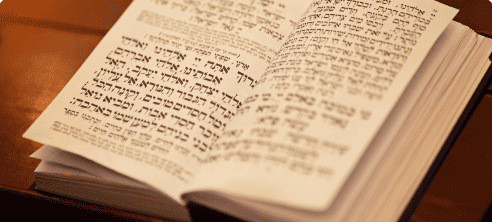
SPECIAL ADDITIONS FOR ASERES YEMEI TESHUVA
Beginning on Rosh Hashanah and continuing until after Yom Kippur, we add specific phrases into the Shmone Esrei.
1. In the first blessing, we ask Hashem to be remembered and written in the Book of Life, “זכרינו לחיים…”
2. In the second blessing, we pray to be recalled with mercy for life “מי כמוך”
3. In the third blessing, we switch “הק-ל הקדוש” to “המלך הקדוש”
4. In the blessing of “השיבה שופטינו” we switch the wording from “מלך אוהב צדקה ומשפט” to “המלך המשפט”.
5. After מודים, we add another plea to be written for life – “וכתוב לחיים טובים…”
6. In the final blessing of שים שלום, we add a prayer for life, peace, livelihood, and more – “בספר חיים ברכה ושלום….”
7. The prayer of אבינו מלכנו is recited on every weekday of the Ten Days of Repentance, including Rosh Hashana and Yom Kippur. In this prayer, we refer to Hashem as our Father and our King while praying for a good year in every respect.

“תשובה תפילה וצדקה מעבירין את רוע הגזירה”
“Repentance, prayers, and charity destroy evil decrees.”

ROSH HASHANAH IN BELZ
STORIES FOR ROSH HASHANAH

INSPIRE YOUR INBOX.
Enjoy a weekly dose of Chassidic insights, highlights and happenings at Belz.

